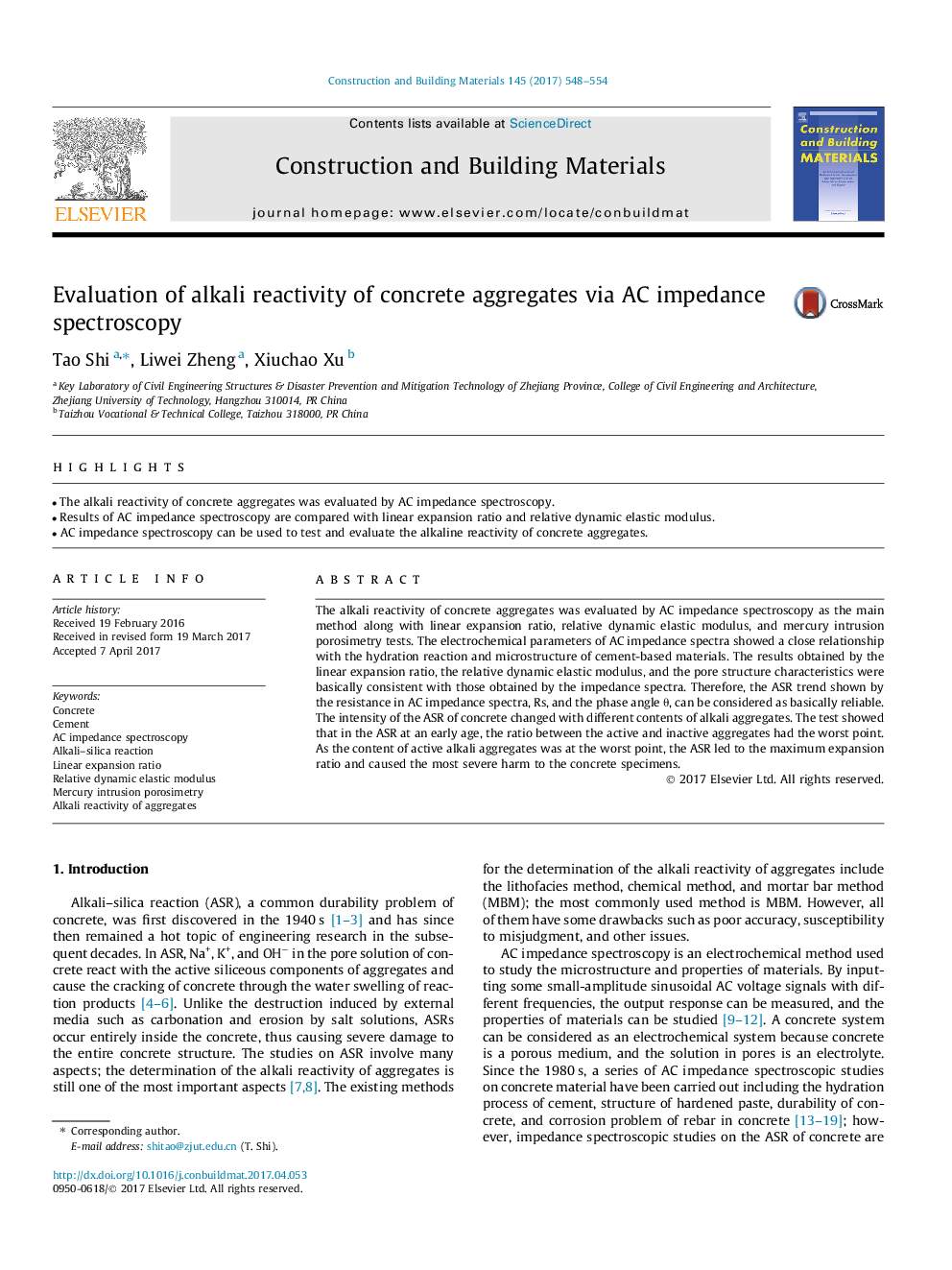| Article ID | Journal | Published Year | Pages | File Type |
|---|---|---|---|---|
| 4918412 | Construction and Building Materials | 2017 | 7 Pages |
Abstract
The alkali reactivity of concrete aggregates was evaluated by AC impedance spectroscopy as the main method along with linear expansion ratio, relative dynamic elastic modulus, and mercury intrusion porosimetry tests. The electrochemical parameters of AC impedance spectra showed a close relationship with the hydration reaction and microstructure of cement-based materials. The results obtained by the linear expansion ratio, the relative dynamic elastic modulus, and the pore structure characteristics were basically consistent with those obtained by the impedance spectra. Therefore, the ASR trend shown by the resistance in AC impedance spectra, Rs, and the phase angle θ, can be considered as basically reliable. The intensity of the ASR of concrete changed with different contents of alkali aggregates. The test showed that in the ASR at an early age, the ratio between the active and inactive aggregates had the worst point. As the content of active alkali aggregates was at the worst point, the ASR led to the maximum expansion ratio and caused the most severe harm to the concrete specimens.
Keywords
Related Topics
Physical Sciences and Engineering
Engineering
Civil and Structural Engineering
Authors
Tao Shi, Liwei Zheng, Xiuchao Xu,
